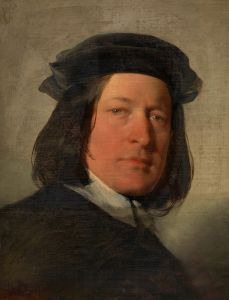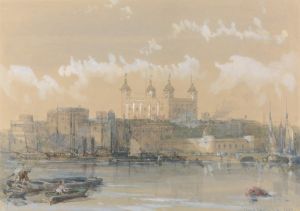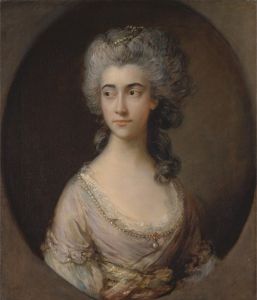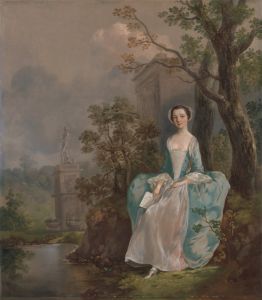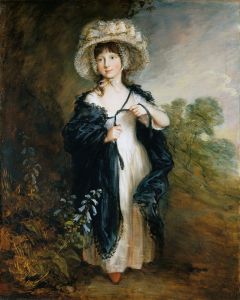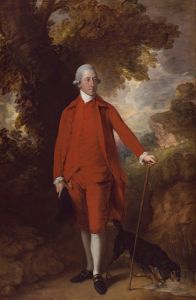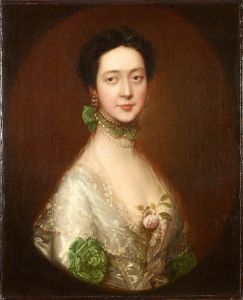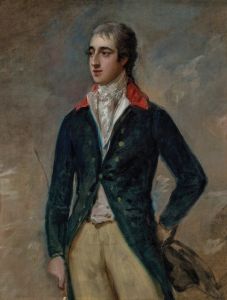
John Hobart , 2nd Earl of Buckinghamshire
A hand-painted replica of Thomas Gainsborough’s masterpiece John Hobart , 2nd Earl of Buckinghamshire, meticulously crafted by professional artists to capture the true essence of the original. Each piece is created with museum-quality canvas and rare mineral pigments, carefully painted by experienced artists with delicate brushstrokes and rich, layered colors to perfectly recreate the texture of the original artwork. Unlike machine-printed reproductions, this hand-painted version brings the painting to life, infused with the artist’s emotions and skill in every stroke. Whether for personal collection or home decoration, it instantly elevates the artistic atmosphere of any space.
Thomas Gainsborough's portrait of John Hobart, 2nd Earl of Buckinghamshire, is a notable example of 18th-century British portraiture, showcasing the artist's skill in capturing the elegance and character of his subjects. Gainsborough, one of the most prominent portrait and landscape painters of the time, was known for his ability to infuse his works with a sense of grace and naturalism, qualities that are evident in this painting.
John Hobart, 2nd Earl of Buckinghamshire, was an English nobleman and politician, born on October 17, 1723. He was the son of John Hobart, 1st Earl of Buckinghamshire, and his second wife, Elizabeth Bristow. Educated at Westminster School and later at Christ's College, Cambridge, Hobart followed in his father's footsteps, entering into public service and politics. He held various political positions, including serving as a Member of Parliament for Norwich and later for St Ives.
In 1756, upon the death of his father, Hobart inherited the title of Earl of Buckinghamshire. His political career continued to flourish, and he was appointed as the Ambassador to Russia from 1762 to 1765, a significant diplomatic role during a period of complex international relations. His tenure in Russia was marked by his efforts to strengthen ties between the two nations.
Gainsborough's portrait of Hobart likely dates from the period after Hobart's return from Russia, capturing him in the prime of his life and career. The painting reflects Gainsborough's characteristic style, with a focus on the sitter's refined features and elegant attire. Gainsborough was known for his ability to convey the personality and status of his subjects through his use of color, light, and composition.
In the portrait, Hobart is depicted in a manner befitting his status as a nobleman and diplomat. His attire is formal, reflecting the fashion of the time, and his pose is confident yet relaxed, suggesting both his social standing and his personal demeanor. Gainsborough's use of a soft color palette and fluid brushwork adds a sense of movement and life to the painting, drawing the viewer's attention to Hobart's face and expression.
The portrait is also notable for its background, which is typical of Gainsborough's work, often featuring a landscape or drapery that adds depth and context to the composition. This element of the painting serves to enhance the overall impression of sophistication and elegance.
Today, Gainsborough's portrait of John Hobart, 2nd Earl of Buckinghamshire, is appreciated not only for its artistic merit but also for its historical significance. It provides a glimpse into the world of 18th-century British aristocracy and the individuals who played key roles in the political and diplomatic arenas of the time. Gainsborough's ability to capture the essence of his subjects has ensured that his portraits remain enduring works of art, celebrated for their beauty and insight into the personalities of their time.





